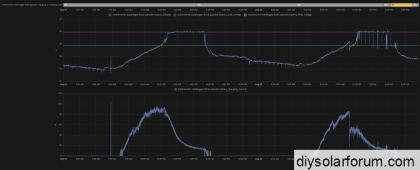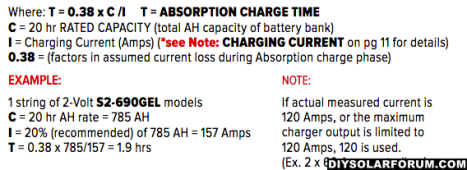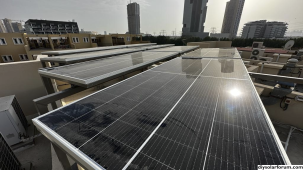I am running a tiny setup with 6x 12V 200Ah gel batteries (huawei) - 3 parallel banks of double batteries. I am just starting (second month) and trying to figure out how to configure my solar controller to properly power these batteries and avoid sub-50% discharge. And I fail miserably day after day...
Running chinese inverter 3500W branded as Raggie (this one). Using collective Internet knowledge I managed to customize pipsolar setup to retrieve all tech data live, bypassing the "wifi dongle" they provided (based on desmonitor.com solution).
I have a 0.5V drop between the battery terminal and the voltage measured at the inverter, so I assumed I have to take this into consideration when setting parameters to my inverter. The bulk charge as per battery spec is set to 29.2V (I configured it to 29.7), float 27.4 (27.9). From what I noticed, the device never enters the float mode (it did only once - below is the result). It reaches 29V which corresponds with the peak sun time between 11 to 4PM, the amps going down, load goes down and at the end of the day when I sum up Ah delivered, it often reaches 550-580Ah, which makes no sense to me at all (it would suggest a totally drained battery to begin with and I simply don't have enough solar capacity to charge it, but the math does not add up).
And then one day - out of nowhere - I see the charging during the day never reaches 29V, and is stuck flat at 27.4V (float mode indicated as ON by the data reader) and battery is being barely charged, solar panel output is within 60-70% of the max output during that specific time, there is no heavy load. Pure float...
I am doing something wrong here. Can you suggest what I should do next to standardize my daily charge cycles?

^ this is the example of the battery voltage and charging current reading on the day when float engaged (left, charging current below 70Amps peak, significantly lower than during bulk) vs the day when the battery was charged using maxed current all day long, reaching over 550Ah by the time, never existing bulk phase (75-90Amps, depending on the load of other devices in the system).
Living in Dubai - reaching almost ideal sun conditions except during the days when the air is dense with sand, but this was not one of these days...
Thoughts?
Running chinese inverter 3500W branded as Raggie (this one). Using collective Internet knowledge I managed to customize pipsolar setup to retrieve all tech data live, bypassing the "wifi dongle" they provided (based on desmonitor.com solution).
I have a 0.5V drop between the battery terminal and the voltage measured at the inverter, so I assumed I have to take this into consideration when setting parameters to my inverter. The bulk charge as per battery spec is set to 29.2V (I configured it to 29.7), float 27.4 (27.9). From what I noticed, the device never enters the float mode (it did only once - below is the result). It reaches 29V which corresponds with the peak sun time between 11 to 4PM, the amps going down, load goes down and at the end of the day when I sum up Ah delivered, it often reaches 550-580Ah, which makes no sense to me at all (it would suggest a totally drained battery to begin with and I simply don't have enough solar capacity to charge it, but the math does not add up).
And then one day - out of nowhere - I see the charging during the day never reaches 29V, and is stuck flat at 27.4V (float mode indicated as ON by the data reader) and battery is being barely charged, solar panel output is within 60-70% of the max output during that specific time, there is no heavy load. Pure float...
I am doing something wrong here. Can you suggest what I should do next to standardize my daily charge cycles?

^ this is the example of the battery voltage and charging current reading on the day when float engaged (left, charging current below 70Amps peak, significantly lower than during bulk) vs the day when the battery was charged using maxed current all day long, reaching over 550Ah by the time, never existing bulk phase (75-90Amps, depending on the load of other devices in the system).
Living in Dubai - reaching almost ideal sun conditions except during the days when the air is dense with sand, but this was not one of these days...
Thoughts?






